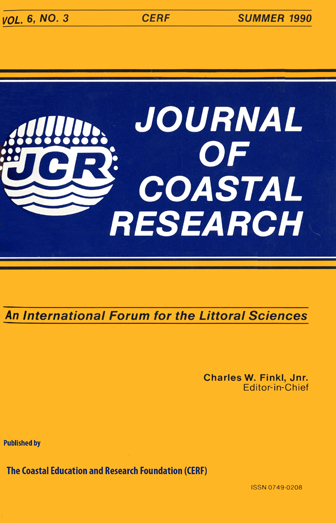Renourishment of a Flood-Tidal Delta Adjacent Beach, Tauranga Harbour, New Zealand
Keywords:
Sediment transport, sediment texture, beach renourishment, artificial beach, dredging, beach sedimentAbstract
Pilot Bay Beach, a flood-tidal delta adjacent beach in Tauranga Harbour, has demonstrated a history of continual erosion. During a maintenance dredging programme in early 1984, the Bay of Plenty Harbour Board renourished the southeastern end of the beach with 2.1 x 104 m3 of dredge spoil. The bay had been included in the Tauranga Harbour Study, which provided baseline data for a study of the behaviour of the renourished beach.
Tidal currents in Pilot Bay are affected by a flood-tidal eddy, which results in a dominant ebb-directed flow for most of each tidal cycle. However, this flow rarely exceeds the sediment entrainment velocity. Additional energy for the entrainment of sediment is provided by waves, particularly on the beach.
Sediment used for renourishment was very similar in composition and texture to the original beach sediment, except for a change in the dominant shell species, and the presence of pumice. The pumiceous clasts within the dredge spoil, being of very low density, were rapidly transported away from the renourished beach.
The sediment transport direction predicted by the dominant tidal flow direction, and by the spatial distribution of sediment texture, was confirmed by observed beach profile changes. Sediment moved from the renourished end of the beach, towards the northwestern end, where long term accretion may occur. During the period April 1984 to October 1987, the average rate of erosion of the renourished beach was 2.52 m3·day-1, giving an expected life of less than 13 years.


